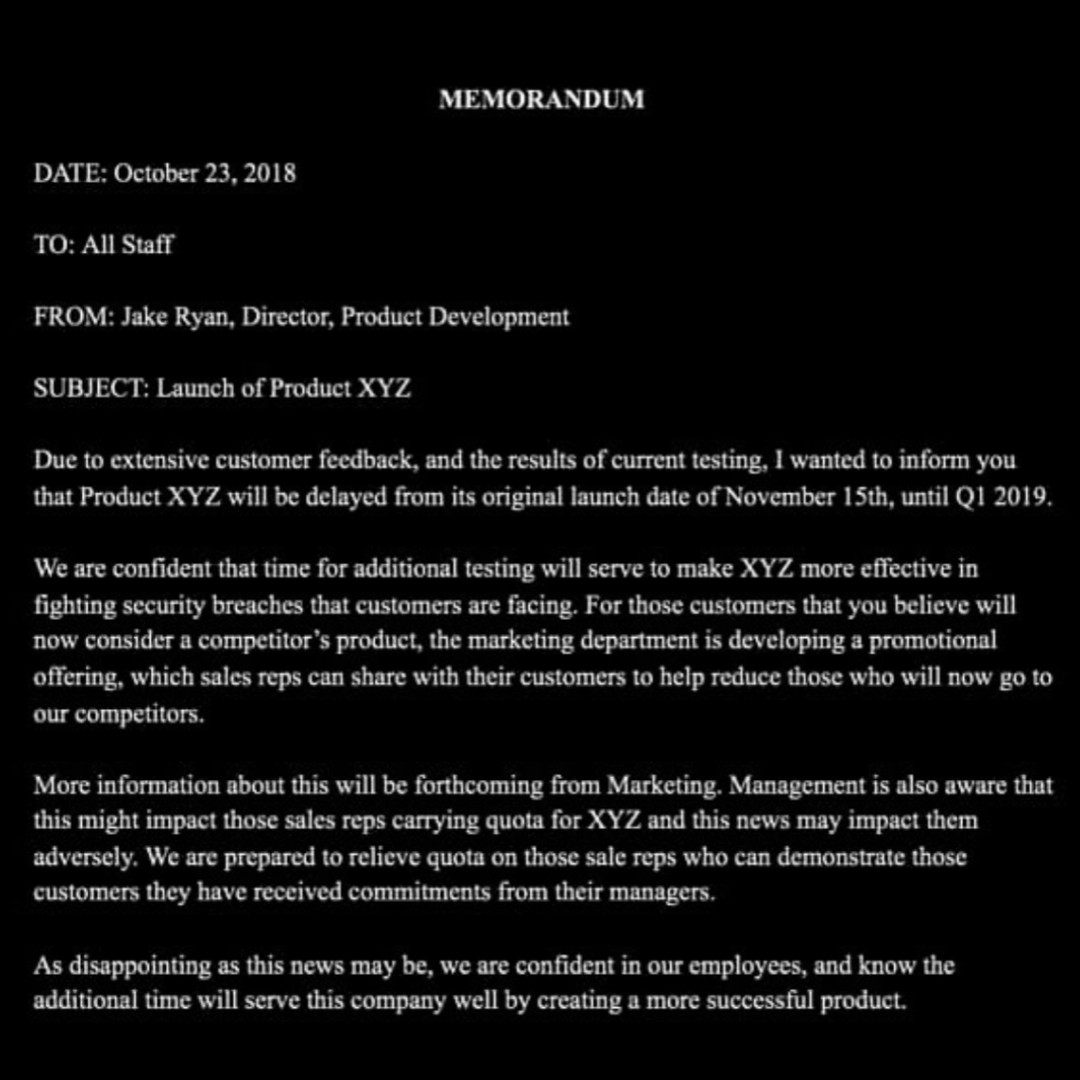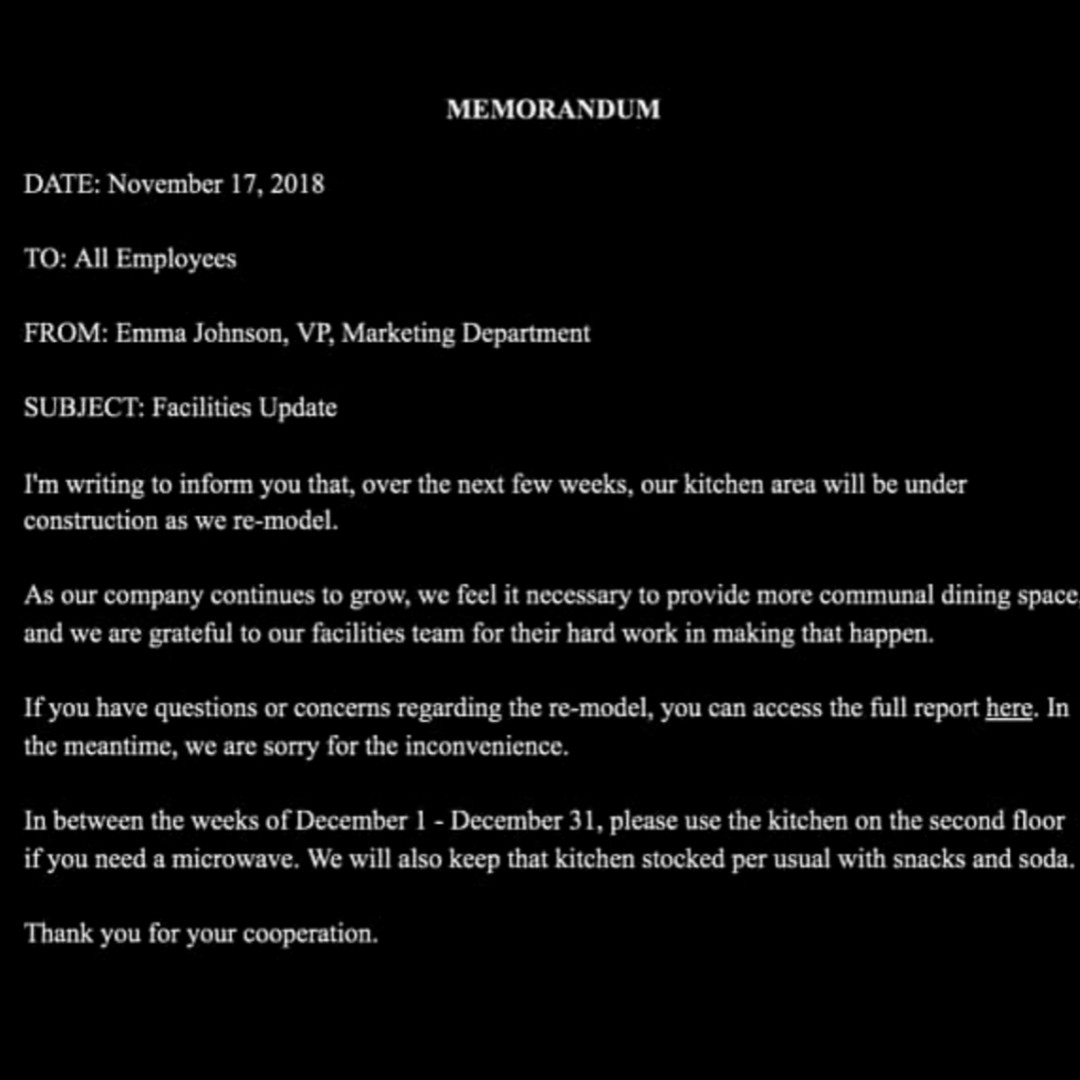How To Write a Memo (with examples): A memo (sometimes known as a memorandum or “reminder”) is a type of internal communication used within an organization to communicate about processes or official business. A memo, unlike an email, is a statement sent to a big group of people, such as your whole department or the entire company. You may need to send out a note to your employees to let them know about future events or to announce internal changes.
Recommended: How to write a perfect affidavit step by step
Format for Memo Writing
Header: If you need to communicate with your staff about formal internal operations, here’s an easy-to-use business note template with examples.
You should explicitly name your material “Memorandum” in your header so that your viewers know what they’re getting. Then add “TO,” “FROM,” “DATE,” and “SUBJECT” to the end. This information is useful for creating content, such as who you’re writing to and why.
Paragraph One: You should promptly and clearly define the aim of your message in the opening paragraph. “I’m writing to notify you…” or “I’m writing to ask…” might be the first words of your statement. A memo should be brief, concise, and to-the-point. You should provide the most important information first, and then utilize the following paragraphs to go into further depth.
Paragraph Two: You should add context or supporting information in the second paragraph. Let’s imagine you’re sending a note to the corporation to advise them of an internal reorganization. If this is the case, the second paragraph should begin with something like, “As our company grows, we’ve concluded that separating our video production team from our content team makes more sense. As a result, those teams will be able to concentrate more on their specific objectives.”
Recommended: Features of a formal letter
Paragraph Three: You’ll want to include your particular request of each employee in the third paragraph — for example, if you’re arranging a team excursion, this is where you’d say, “Please RSVP with dietary needs,” or “Please email me with questions.”
On the other hand, if you’re notifying employees of future building work, you may remark, “I’d appreciate your cooperation at this period.” Even if you don’t anticipate employees to take any specific action in reaction to the memo, including how you think they’ll receive the news and if you want them to do anything in response to the memo is beneficial.
Recommended: Tip to become faster when read
Organization of a Memo
Direct and indirect techniques are used to structure professional communication formats.
a. The aim of the document is presented in the opening paragraph (often the first phrase) of the direct organization strategy, and supporting information are provided in the body.
b. The indirect organization technique starts with interesting, attention-getting aspects that don’t immediately indicate the document’s objective.
The message’s aim is frequently disclosed in the body, wedged between supporting data. The direct method is used for regular communication or good news; the indirect method is used for persuasive, sales, or negative news messaging. In positive news or regular messages, a clearly stated objective is acceptable, but in a negative news or persuasive message, it may appear sudden or callous. When the audience isn’t responding well to the message, it’s important to build up to the goal gradually.
In both types of organizations, the last paragraph contains action instructions (like timelines or contact information) or a courteous concluding statement.
Recommended: How to create an effective study timetable for yourself
Style and Tone Used in a Memo
While certain documents, such as memo reports and policy memoranda, have a more official tone, most memos will be written in a conversational manner, which is slightly casual but yet professional. Memos’ intended audience is the people with whom the writer works, therefore the writing style normally presupposes a working connection (and hence a certain lack of formality); only remember that the relationship is professional, so the language should reflect that.
Furthermore, as with any workplace papers, the audience may include a wide range of readers, and the language and tone should be acceptable for various levels of technical and authority.
Distribution Format
In firms where not all employees have access to email, memos might be issued manually using print media. Memos can be sent as attachments to email in organizations that have access to it.
Writers must decide whether to send a memo or an email message to every employee (or every employee in the memo’s audience) in companies where email reaches every employee (or every employee in the memo’s audience). In situations like these, authors should think about three things: the message’s nature, the depth/number of information it contains, and the chance of it being printed for easy reference. For quick (and ecologically sustainable) distribution, these messages should be prepared in memo format and appended to an email message.
Recommended: How to be a good conversationalist
Examples of Memo Templates
The above-mentioned template Format is intended to effectively deliver your message. A memo should distribute important information in a style that is easy to understand by a large group of people.
A precise subject line will let them know that this letter is intended for them. Additionally, starting with an executive summary enables consumers to grasp the overall message before diving into the specifics. The background material gives the message context, and the summary and timetable should address any questions that may arise.
Memos will change somewhat depending on the industry or scenario. Some will have to be considerably short or longer, while others will lack a chronology and have a lot of background material. Your memo’s structure should adapt to the message you wish to convey to your staff.
Launch Delay Memo:

This memo’s purpose is to inform you that a product’s debut has been postponed. Because the new date is included in the introduction, there is no need for a timetable or a lengthy summary. This memo style might be used in various circumstances where a little but significant shift is taking place. This approach might also be used for other date adjustments, promotions, milestones, or product launches.
Building Update Memo:

There are some characteristics of a business that worry your workers but aren’t necessarily related to their jobs. This document illustrates an example of an office kitchen. It’s a minor annoyance, but it shouldn’t have a significant impact on their job. This technique might be used for additional building improvements, work-from-home days, or other widely publicized but small announcements.
Community Memo:

Memos may also be used to convey events, concept weeks, or other entertaining activities for your staff. Community memos, such as this one, are often shorter since they do not require a lot of background information or specifics. At a minimum, these should provide a summary, date, and location.
Also see: How to Easily start a conversation with someone
Tips For Writing a Good Memorandum
a. When drafting a note, keep your audience in mind. While the marketing department may be familiar with an acronym or shorthand, the IT department may not be. If you’re writing a message for the entire firm, make sure it’s written in clear, succinct language that everyone can understand. Maintain a professional tone by employing business jargon.
b. Before sending, proofread and evaluate your work. It’s a good idea to read your note aloud to check for typos, inconsistencies, and tone. If you have the opportunity, discuss it with a trustworthy colleague who can provide a second set of eyes. When sending a note to the whole business, you are speaking on behalf of the firm, so be sure the tone and content are correct.
c. Write a topic that is simple and uncomplicated. If you need to send a memo announcing the observance of a holiday, for instance, add the name, date, and weekday of the holiday in the subject line. Send your note at least a week before the event or deadline to allow time for individuals to make changes to their schedules.
Recommended: Important books every writer should read
Conclusion
The fundamental difference between a memo and a simple email is the size of the audience, not the amount of sophistication. A memo can be basic or complex, as long as it conveys your message clearly and is informative to who will receive it. Regardless of the memo style you pick, the content itself will be clear and simple.

Edeh Samuel Chukwuemeka, ACMC, is a lawyer and a certified mediator/conciliator in Nigeria. He is also a developer with knowledge in various programming languages. Samuel is determined to leverage his skills in technology, SEO, and legal practice to revolutionize the legal profession worldwide by creating web and mobile applications that simplify legal research. Sam is also passionate about educating and providing valuable information to people.


